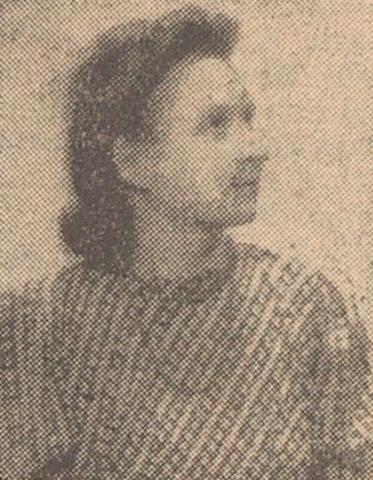Helene Buchwieser, daughter of the architect and master builder Bruno Buchwieser, studied architecture at the Technische Hochschule in Vienna from 1932. During her studies she gained practical experience as a mason, building engineer and supervisor on her father's building sites. She graduated in April 1937 and went on a study trip to Britain, where she prepared a dissertation on the development of universities in the Middle Ages, which she hoped to write under the supervision of building historian and cathedral master builder Karl Holey, but was unable to complete it following Holey's resignation as rector of the Technische Hochschule in 1938. After Fritz Dworschak, temporary director of the Kunsthistorisches Museum (KHM) in Vienna applied successfully to department III of the Reichsstatthalterei in Austria for the recruitment of an assistant for architecture, building and interior design questions, Helene Buchwieser was appointed head of the new building department in the KHM. In this position, she organized the restoration and redesign of the Secular and Ecclesiastical Treasury, the interior design of the Neue Burg and the work required to install the Collection of Historic Musical Instruments in Palais Pallavicini in the centre of Vienna. She planned the installation of the busts of Hitler by Edwin Grienauer and Wilhelm Fraß in the vestibule of the Kunsthistorisches Museum and Neue Burg and was responsible for the decorations in preparation for the visit by the "Führer" in March 1939. She never applied for or was accepted as a member of the NSDAP. She worked freelance on payment of a half-salary, but already by November 1939 war economies forced Dworschak to close down the building department and terminate Buchwieser's position in the museum. She remained in contact privately with the KHM after marrying the art historian and Treasury assistant Lothar Kitschelt in December 1939. In 1940 she took over temporary management of her father's company and passed the master builder examination. Kitschelt was conscripted into the army and reported missing in November 1944. Thereafter Helene Kitschelt-Buchwieser's name still turned up occasionally in the museum files, having provided her signature in the place of her absent husband.
In 1945 she deputized for the cathedral master builder Karl Holey, supervising the securing and reconstruction of the burned-out St Stephen's Cathedral. In September 1945 the Staatsamt für öffentliche Bauten, Übergangswirtschaft und Wiederaufbau (State Office for Public Buildings, Transitional Economy and Reconstruction) awarded her the title of Zivilingenieurin für Hochbau (civil engineer for building construction). In 1946/47 she received a six-month bursary from the United Nations Relief and Rehabilitation Administration to study new building materials and methods and residential building and housing development in the USA. In 1947 she married Josef Koller, who worked at the Bundesministerium für Volksernährung (Federal Ministry of Popular Nutrition). In subsequent years, under the name Helene Koller-Buchwieser, she was responsible for a number of public buildings and churches in Austria, including the Jungarbeiterdorf Hochleiten in Mödling, the Viktring-Klagenfurt estate, the estate An den langen Lüssen in Vienna's 19th district, the Töchter des göttlichen Heilands (Daughters of the Divine Saviour) boarding school in the 7th district, the Pfarrkirche zur Kreuzerhöhung (Exaltation of the Cross parish church) in Kittsee and the Evangelical-Catholic twin church in Giesshübl-Hinterbrühl. The Archbishop of Ouagadougou in Upper Volta, now Burkina Faso, commissioned her around 1970 to build a juvenile training centre in Ouahigouya and a centre for disabled persons in Ouagadougou as well as St Pierre's church in Ouagadougou. She received numerous awards as an architect and member of the International Union of Women Architects and examiner of subsidized building projects in the Vienna provincial government. She remained active until 1995.

